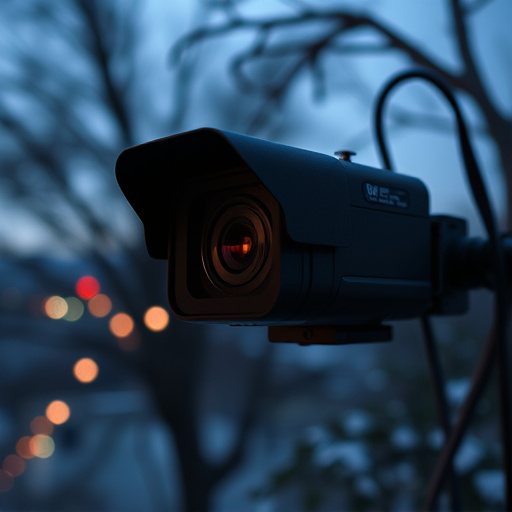Optical sensor technology, integrated into indoor spy cameras with night vision, enhances security through advanced visual data capture in low-light conditions. These cameras, equipped with night vision capabilities like image intensification or thermal imaging, enable 24/7 surveillance, but raise privacy concerns necessitating ethical considerations and adherence to legal frameworks. Professional sensor detection sweeps use techniques like thermal imaging and RF scanning for comprehensive assessments. Balancing security and privacy is crucial for responsible implementation of indoor spy cameras with night vision.
Uncover the world of indoor surveillance with our comprehensive guide on optical sensor technology. Explore the power of night vision cameras, understanding their capabilities to enhance safety while navigating privacy concerns. Discover professional methods for effective sensor detection sweeps, ensuring optimal results. From ethical considerations in spy camera use to advanced techniques, this article delves into the intricacies of indoor spy camera with night vision systems, providing insights for informed decision-making.
- Understanding Optical Sensor Technology for Indoor Surveillance
- Night Vision Cameras: Uncovering Hidden Dangers and Benefits
- Professional Methods for Effective Sensor Detection Sweep
- Ensuring Privacy and Security: Ethical Considerations in Spy Camera Use
Understanding Optical Sensor Technology for Indoor Surveillance
Optical sensor technology is a cornerstone in modern indoor surveillance systems, offering advanced capabilities for monitoring and security. These sensors, often incorporated into Indoor Spy Cameras with Night Vision, are designed to detect and capture visual data in a variety of conditions. The key lies in their ability to harness both visible light and infrared radiation, enabling clear images even in complete darkness.
Night vision functionality is achieved through image intensification or thermal imaging, ensuring round-the-clock surveillance. This technology has revolutionized indoor security by providing discreet and effective monitoring solutions. By utilizing optical sensors, professionals can now set up sophisticated spy cameras that blend seamlessly into the environment while offering powerful detection capabilities for any potential intrusions or suspicious activities.
Night Vision Cameras: Uncovering Hidden Dangers and Benefits
Night Vision Cameras, often featured in Indoor Spy Cameras with Night Vision, offer a unique blend of risks and advantages when used professionally. On one hand, they provide an invaluable tool for security and surveillance in low-light conditions or complete darkness. This technology is instrumental in enhancing safety measures in various settings, from homes to industrial facilities, by detecting and recording activities that might otherwise go unnoticed.
However, the use of night vision cameras also raises ethical considerations. The ability to capture images and videos in the dark can infringe on privacy, making it crucial for professionals to adhere to strict guidelines and legal frameworks when deploying such devices. Balancing security needs with individual rights demands careful planning, transparency, and respect for privacy norms.
Professional Methods for Effective Sensor Detection Sweep
Professional methods for effective sensor detection sweep are essential in ensuring comprehensive and accurate assessments, especially when dealing with sensitive applications like indoor spy camera with night vision. These advanced techniques go beyond standard practices, employing sophisticated tools and strategies to uncover hidden devices or anomalies. One key approach involves utilizing specialized thermal imaging cameras, which can detect heat signatures not visible to the naked eye, thereby identifying irregular temperature patterns indicative of covert surveillance equipment.
Additionally, professionals often employ radio frequency (RF) scanning technologies to sweep for wireless signals emanating from hidden cameras. This method is particularly effective in detecting night vision devices that communicate via RF signals. By systematically scanning frequency bands known to be used by such cameras, experts can pinpoint their locations and even gather data on their operational status, making it a game-changer in ensuring security and privacy in indoor environments.
Ensuring Privacy and Security: Ethical Considerations in Spy Camera Use
Using optical sensor detection and advanced methods, such as indoor spy cameras with night vision, comes with a responsibility to ensure privacy and security. As technology advances, offering enhanced surveillance capabilities, ethical boundaries must be carefully considered. The subtle nature of spy cameras, designed for hidden observation, raises significant concerns regarding individual privacy rights.
In implementing these professional techniques, it’s vital to adhere to legal frameworks and respect personal boundaries. This includes obtaining consent when applicable and ensuring that the use of indoor spy cameras with night vision is transparent and legitimate, avoiding any malicious intent. Ethical guidelines must be followed to maintain a balance between security measures and preserving the privacy of individuals in both public and private spaces.
The evolution of optical sensor technology, particularly indoor spy cameras with night vision, has revolutionized surveillance methods. Professional techniques for sensor detection sweeps are essential to ensure comprehensive coverage and maintain privacy and security. By understanding the capabilities and ethical implications of these advanced systems, we can harness their potential while safeguarding against unauthorized use. This balanced approach is key to navigating the modern landscape of surveillance technology.
